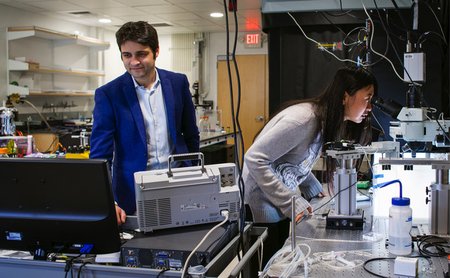For their 1966 song, "Good Vibrations," the Beach Boys assembled an unusual mix of instruments—including a jaw harp, a cello, and an Electro-Theremin—to produce one of their biggest hits. By arranging sound waves in a unique and particular way, they were able to elicit a positive response.
Many doctors and researchers have the same goal. After all, the same "excitations" that helped the Beach Boys usher in an era of feel-good pop—the sound waves that propagate through air and water, bringing notes of music to our ears—are also noninvasively able to explore body tissues, helping to visualize babies in the womb, heal back pain, or even deliver chemotherapeutics to targeted tumors.
One of the most-used "good vibrations" in medicine is ultrasound—sound waves delivered at a frequency inaudible to the human ear. Ultrasound has been used in medical settings since the 1940s for diagnostics and in recent years has gained popularity for use in physical therapy and to speed up drug delivery.
But that, say chemical engineer Mikhail Shapiro and biologist Doris Tsao, isn't all that ultrasound can do. The two, who met shortly after Shapiro was hired to the Caltech faculty in late 2013, have joined forces to develop a new technology that uses ultrasound to both map and determine the function of interconnected brain networks. Their goal: to one day be able to change abnormal neural activity deep within the brain using pulses of sound. The idea is so intriguing that, in September 2014, theirs became one of 58 projects nationwide to be awarded funding by the National Institutes of Health (NIH) as part of President Obama's Brain Research through Advancing Innovative Neurotechnology—or BRAIN—Initiative.
 Michael Shapiro (left) and Doris Tsao
Credit: HC Van Urfalian for Caltech
Michael Shapiro (left) and Doris Tsao
Credit: HC Van Urfalian for Caltech

